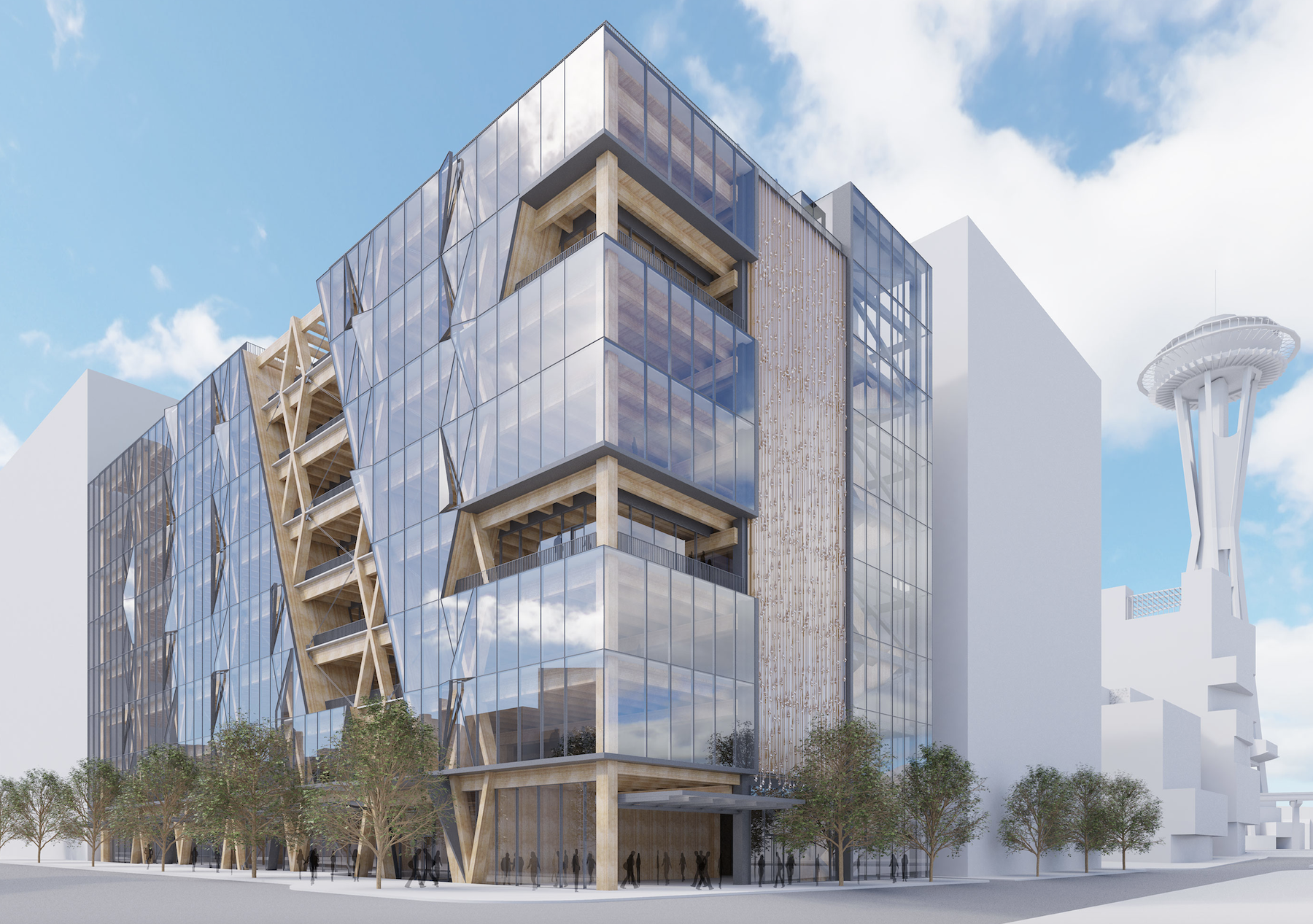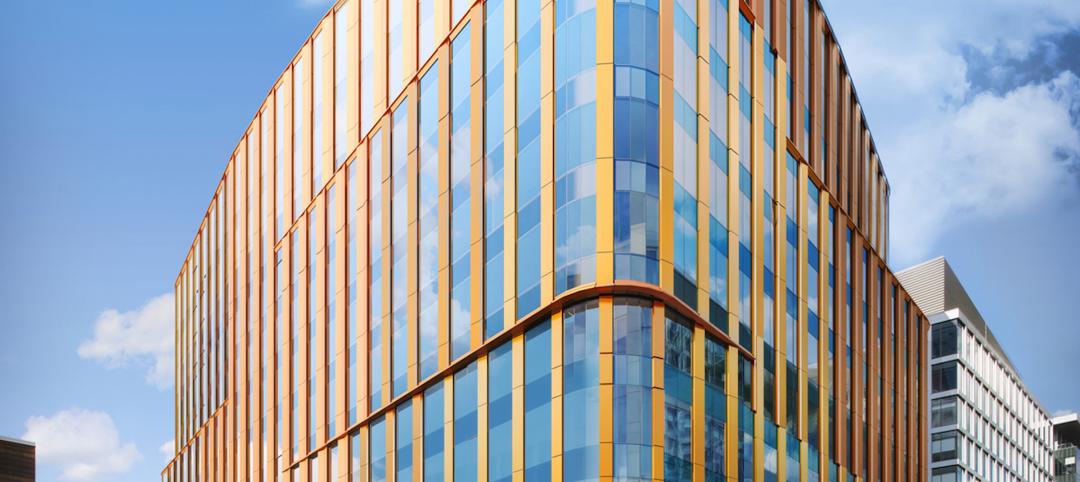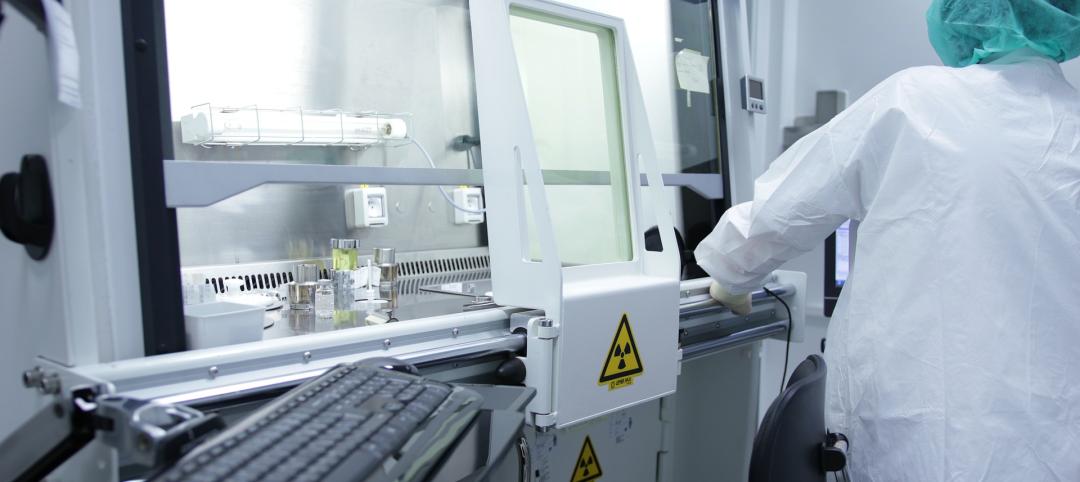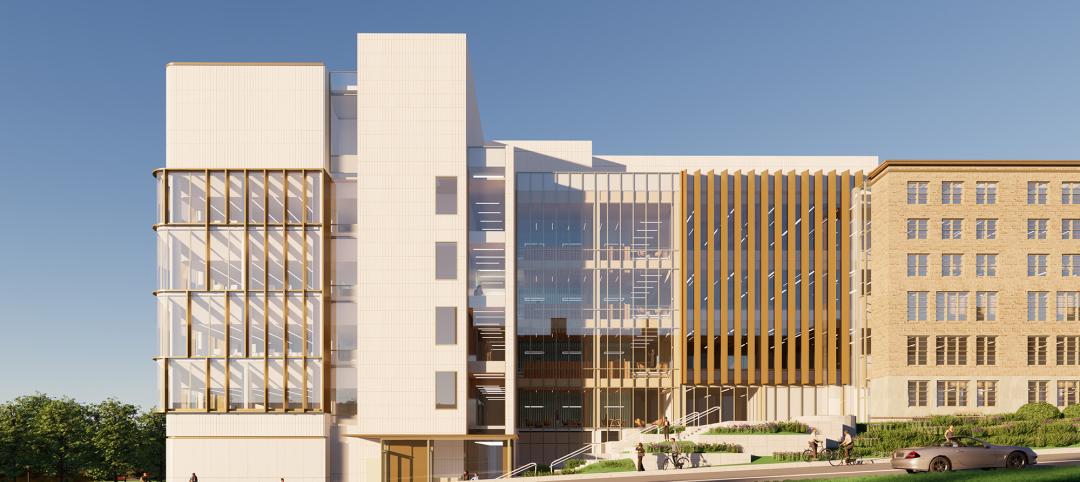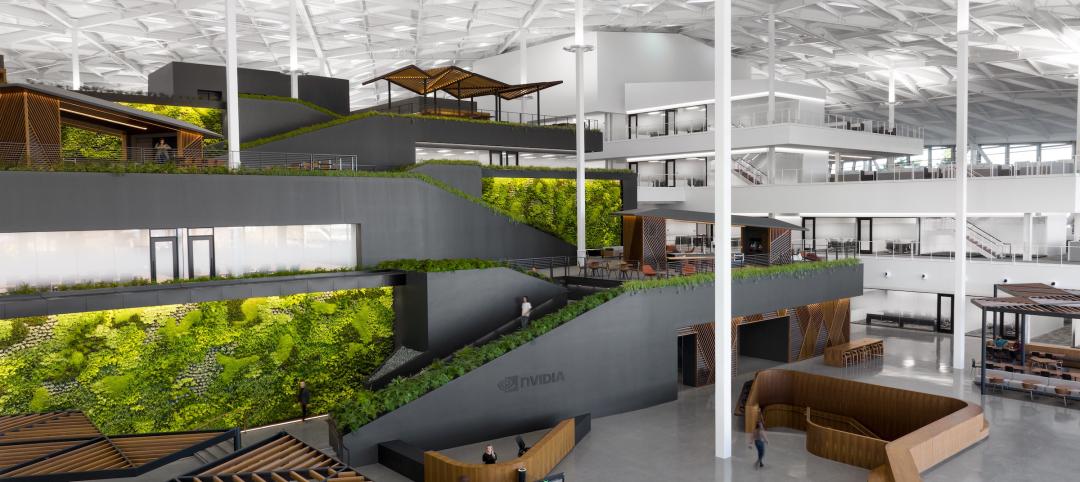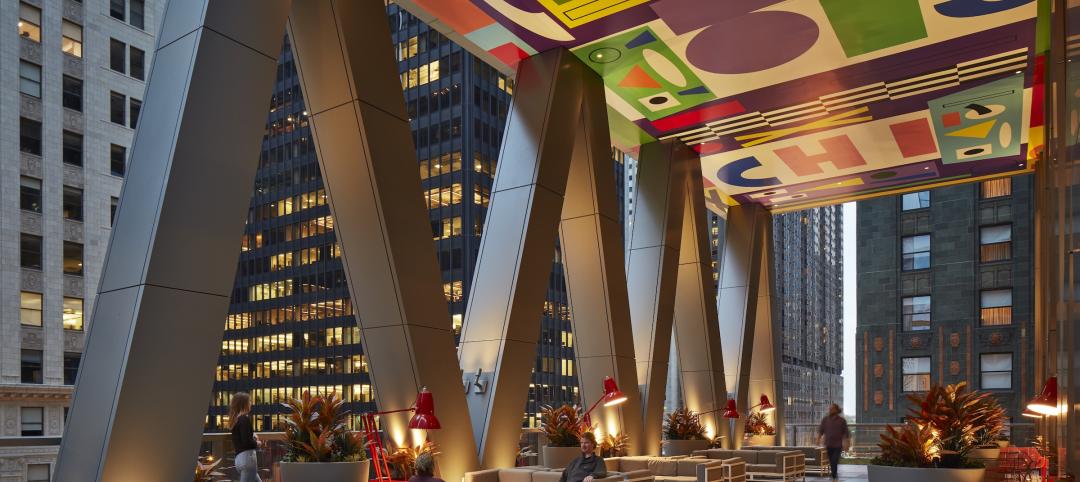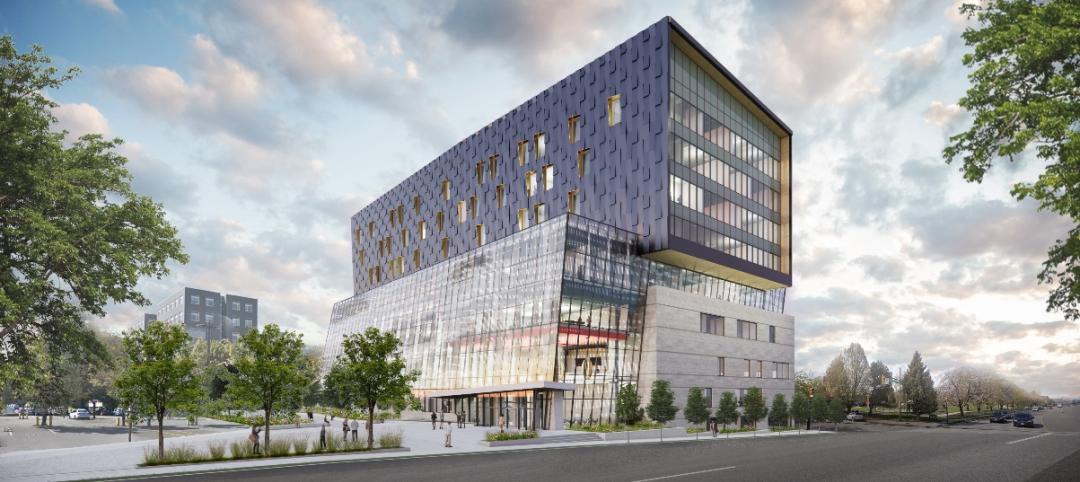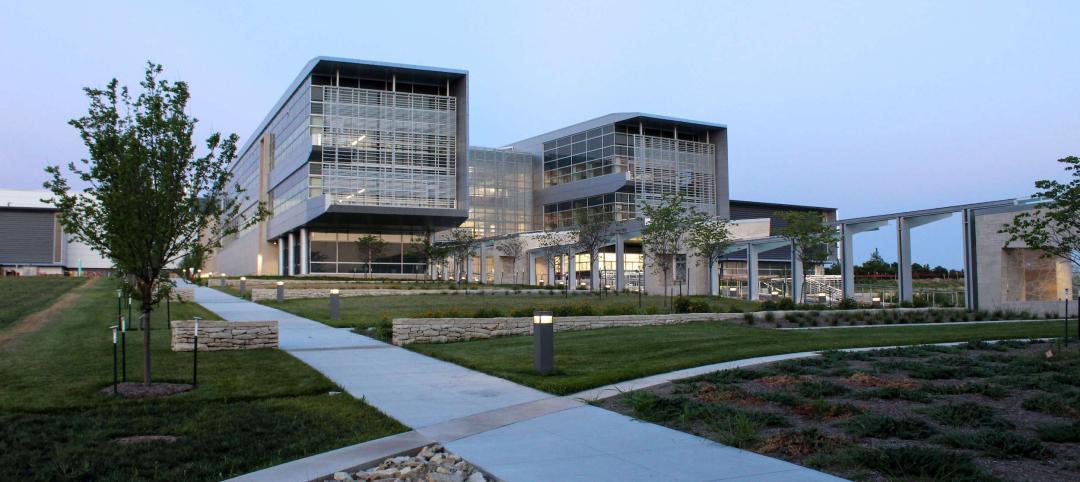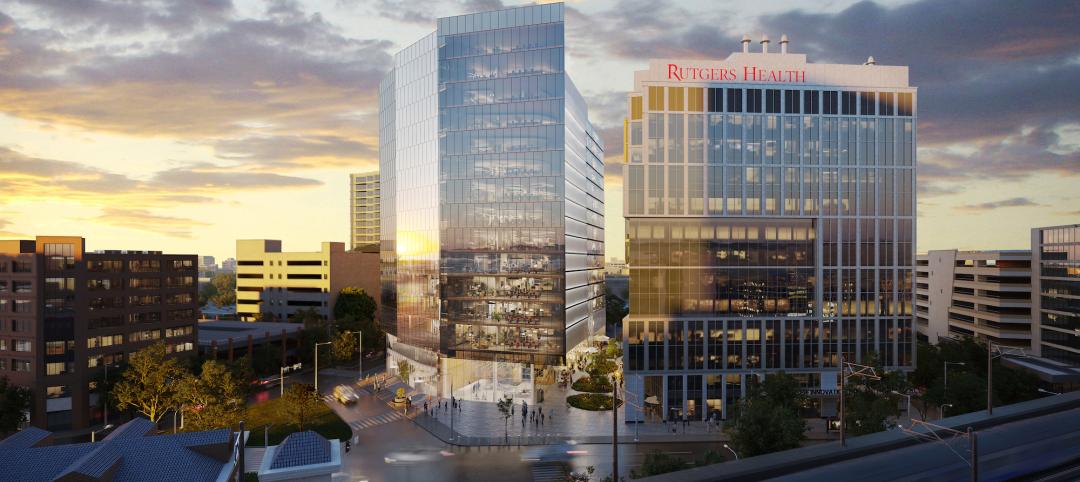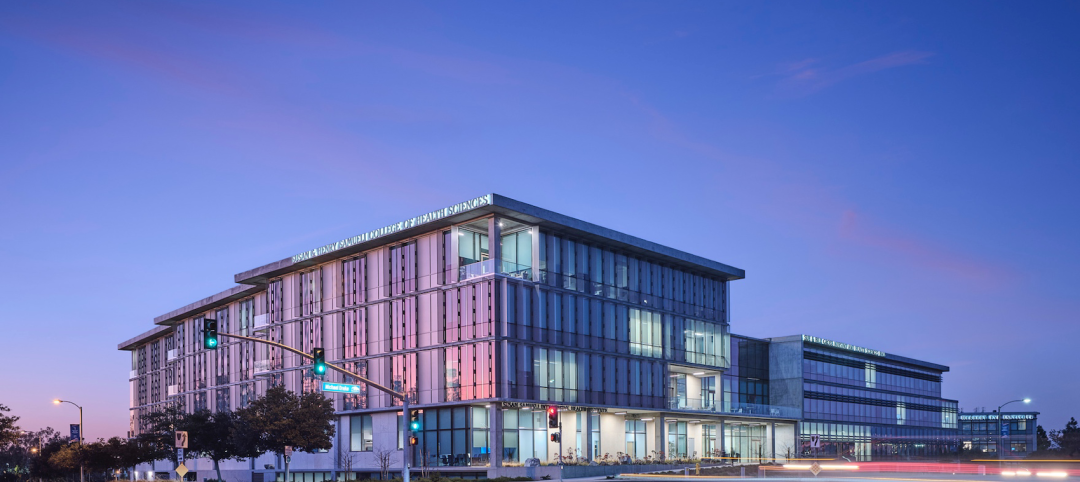The mushrooming global demand for lab space has prompted AEC firms and their developer clients to rethink how science buildings can be designed and constructed quicker and efficiently.
These buildings need “to be optimized for a tenant; concerns about vibration, ventilation, containment, and specialized equipment go beyond the scope of traditional workplaces,” wrote Chad Yoshinobu, AIA, LEED BD+C, Design Director, and a global leader in Gensler’s science practice in Seattle.
Enter NEXT, a prototype that Gensler and the engineering firms Buro Happold and KPFF have developed, with performance metrics backed up by data.
The research project was funded by Gensler Research Institute, and was designed on the specific site within Seattle’s Uptown Arts District to be 250,000 sf and eight stories tall. The project had three goals: to make this space more than just a container for people, to increase product differentiation for competitive marketing, and to offer solutions that prioritize decarbonization as a method of resilience.
Mass timber was a seminal building material for this project, mainly because it is well-suited to off-site modular construction at a nearby factory and can be delivered as a kit of parts, explained Yoshinobu.
“This approach would be 30 percent faster and 10 percent cheaper to construct than a conventional concrete building,” he estimated. With 85 percent fewer deliveries to the site and a 75 percent reduction in construction waste, NEXT emits 80 percent less carbon to build than a conventional concrete lab building. This amounts to a savings of approximately 5,200 total metric tons of CO2.
NEXT deploys an all-electric heat pump chiller (EL1) system that Gensler stated is more efficient than a natural gas system in all locations and sectors. All-electric systems result in lower building Energy Use Intensity (EUI) in all markets and achieve zero carbon emissions on a clean grid. In total, NEXT produces 50 percent less greenhouse gas emissions and uses 30 percent less energy annually than a conventional lab building.
FLEXIBLE LAYOUT
Lab benches and vibrations in the floor plate typically determine a lab space’s layout. The NEXT team created a grid at 33 by 33 ft, which Yoshinobu contended is “optimal” for a lab bench layout because of the flexibility it affords tenants to orient the benches as they see fit. The building core is moved from the center to the side of the building, allowing tenants more layout flexibility with far fewer obstructions.
The size of this grid in mass timber doesn’t work well with vibration. “So we partnered with our engineering partner KPFF to make it work,” said Yoshinobu, to achieve a vibration of 6,000 MIPS, a go-to standard for most lab buildings, by implementing a structural frame that acts as an ecosystem between the size of the columns, girders, beams, CLT floors, and concrete topping slab.
CONNECTING WITH OUTDOORS AND COMMUNITY
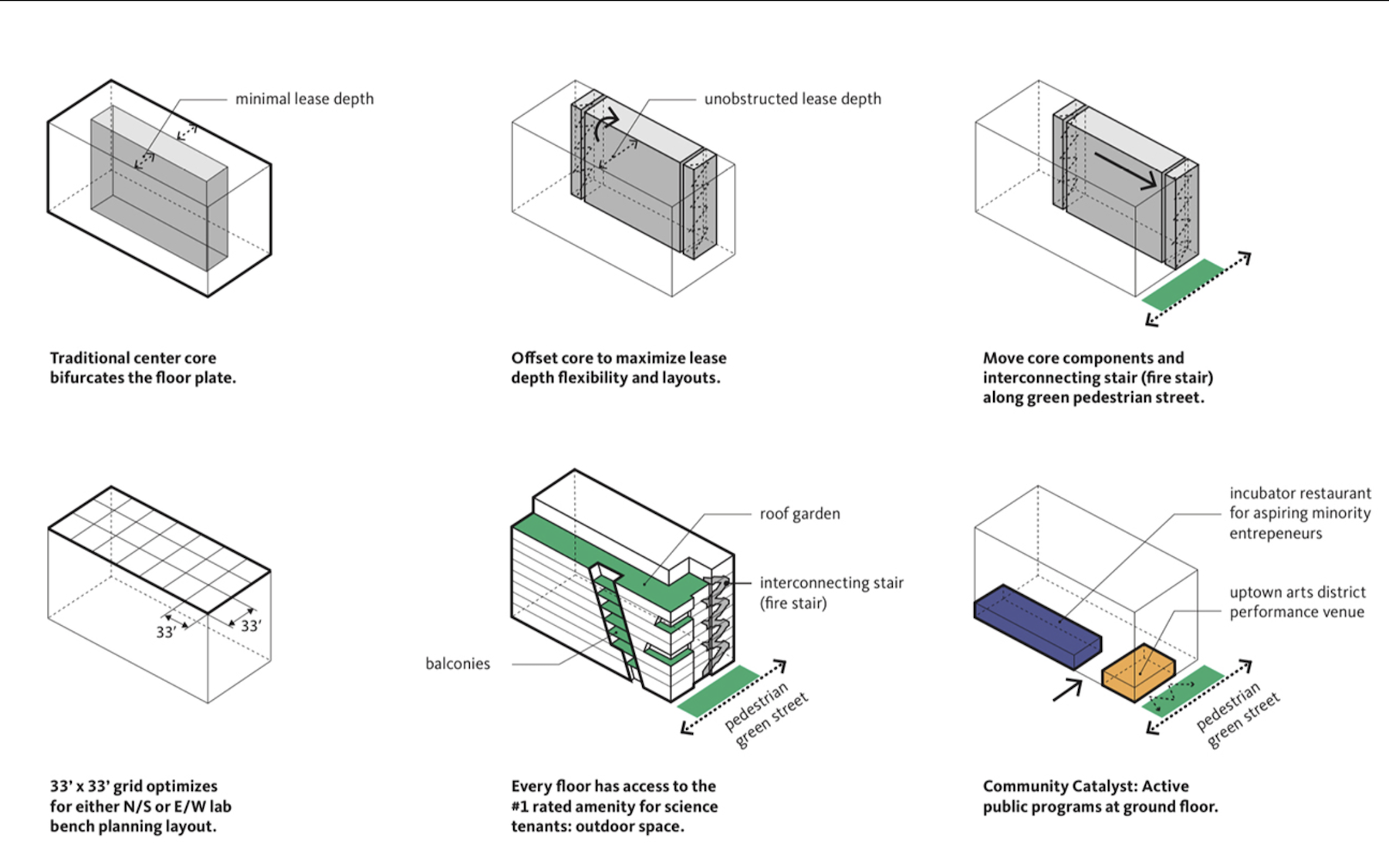
NEXT also places a premium on natural ventilation and outdoor spaces. Multiple operable windows give the workplace more access to fresh air. Seattle’s temperate climate is conducive to natural ventilation, and NEXT is designed so more than one-third of total occupied work hours can be in natural ventilation mode. That leads to energy savings of 30 percent compared to a conventional lab building.
According to the latest Gensler U.S. Workplace Survey, science workers ranked outdoor space as their top workplace amenity. Each floor of the NEXT concept has direct access to outdoor spaces. The building’s fire stair has been turned into a wellness amenity, too, by moving it to the perimeter, and flooding the stairwell with daylight and views. The stair is also an alternative to using elevators.
This multipurpose venue was created in partnership with the Uptown Arts and Cultural Coalition to provide flexible spaces for young musicians, art education, theater, and practice/performance space. The restaurant incubator gives minority entrepreneurs the opportunity to launch their businesses, while a shared kitchen space allows for multiple food venues to enhance the neighborhood food scene. “These efforts will create more cultural diversity within the Uptown District,” wrote Yoshinobu.
He told BD+C that since releasing its research findings, Gensler has received calls from clients and developers “asking us to explore the attributes of this idea on their particular sites.”
Related Stories
Laboratories | Nov 8, 2023
Boston’s FORUM building to support cutting-edge life sciences research and development
Global real estate companies Lendlease and Ivanhoé Cambridge recently announced the topping-out of FORUM, a nine-story, 350,000-sf life science building in Boston. Located in Boston Landing, a 15-acre mixed-use community, the $545 million project will achieve operational net zero carbon upon completion in 2024.
Laboratories | Sep 20, 2023
Life sciences construction market is poised for a comeback: JLL
The life sciences commercial real estate market has undergone a reset this year but is well positioned to be the comeback kid as capital sources grow more confident and green shoots emerge, according to JLL’s 2023 Life Sciences Industry and Real Estate Perspective.
Laboratories | Aug 24, 2023
Net-zero carbon science center breaks ground in Canada
Designed by Diamond Schmitt, the new Atlantic Science Enterprise Centre (ASEC) will provide federal scientists and partners with state-of-the-art space and equipment to collaborate on research opportunities.
Giants 400 | Aug 22, 2023
Top 115 Architecture Engineering Firms for 2023
Stantec, HDR, Page, HOK, and Arcadis North America top the rankings of the nation's largest architecture engineering (AE) firms for nonresidential building and multifamily housing work, as reported in Building Design+Construction's 2023 Giants 400 Report.
Giants 400 | Aug 22, 2023
2023 Giants 400 Report: Ranking the nation's largest architecture, engineering, and construction firms
A record 552 AEC firms submitted data for BD+C's 2023 Giants 400 Report. The final report includes 137 rankings across 25 building sectors and specialty categories.
Giants 400 | Aug 22, 2023
Top 175 Architecture Firms for 2023
Gensler, HKS, Perkins&Will, Corgan, and Perkins Eastman top the rankings of the nation's largest architecture firms for nonresidential building and multifamily housing work, as reported in Building Design+Construction's 2023 Giants 400 Report.
University Buildings | Aug 7, 2023
Eight-story Vancouver Community College building dedicated to clean energy, electric vehicle education
The Centre for Clean Energy and Automotive Innovation, to be designed by Stantec, will house classrooms, labs, a library and learning center, an Indigenous gathering space, administrative offices, and multiple collaborative learning spaces.
Laboratories | Jul 10, 2023
U.S. Department of Agriculture opens nation’s first biosafety level 4 containment facility for animal disease research
Replacing a seven-decade-old animal disease center, the National Bio and Agro-Defense Facility includes the nation’s first facility with biosafety containment capable of housing large livestock.
Laboratories | Jun 23, 2023
A New Jersey development represents the state’s largest-ever investment in life sciences and medical education
In New Brunswick, N.J., a life sciences development that’s now underway aims to bring together academics and researchers to work, learn, and experiment under one roof. HELIX Health + Life Science Exchange is an innovation district under development on a four-acre downtown site. At $731 million, HELIX, which will be built in three phases, represents New Jersey’s largest-ever investment in life sciences and medical education, according to a press statement.
University Buildings | May 17, 2023
New UC Irvine health sciences building supports aim to become national model for integrative health
The new College of Health Sciences Building and Nursing & Health Sciences Hall at the University of California Irvine supports the institution’s goal of becoming a national model for integrative health. The new 211,660-sf facility houses nursing, medical doctorate, pharmacy, philosophy, and public health programs in a single building.


